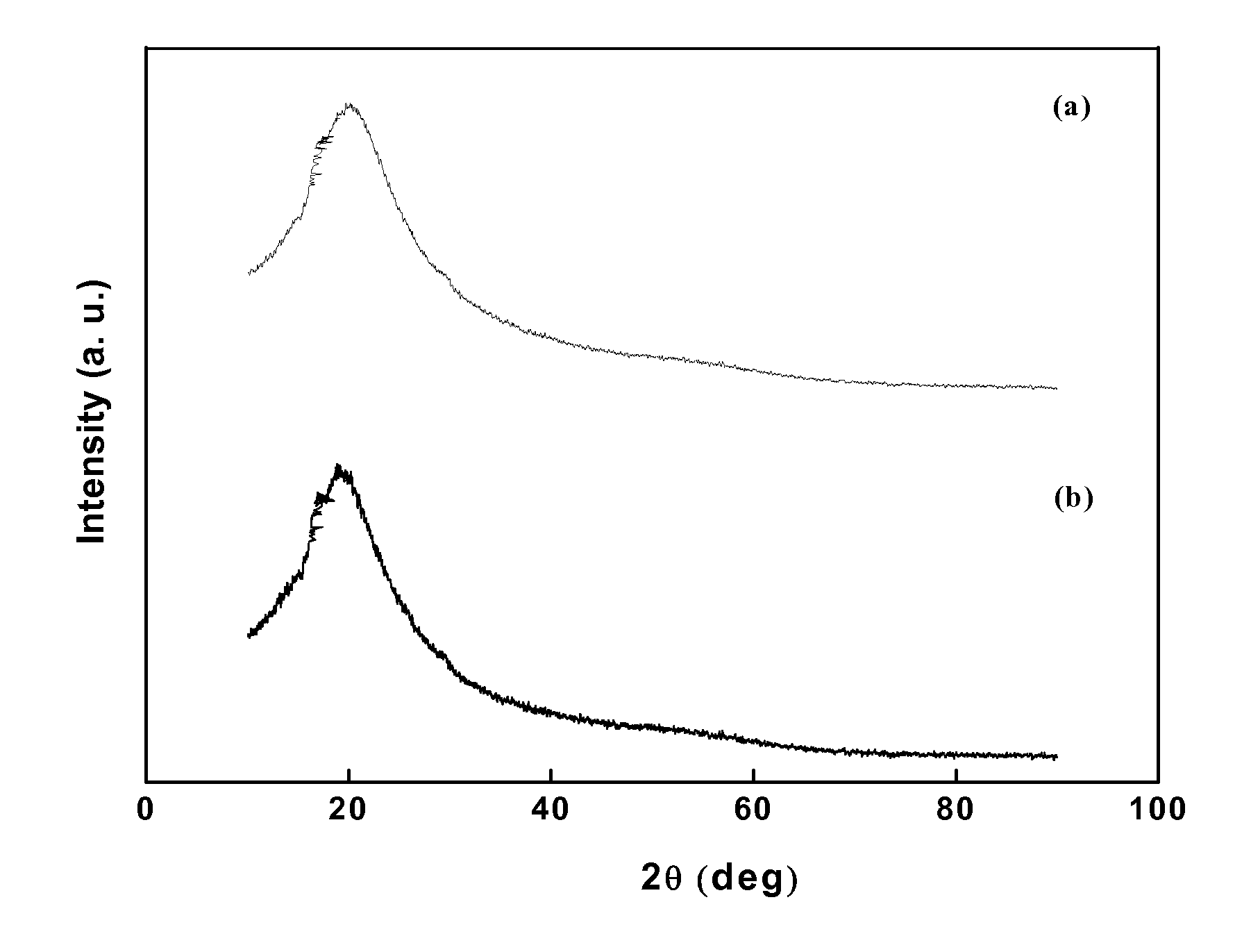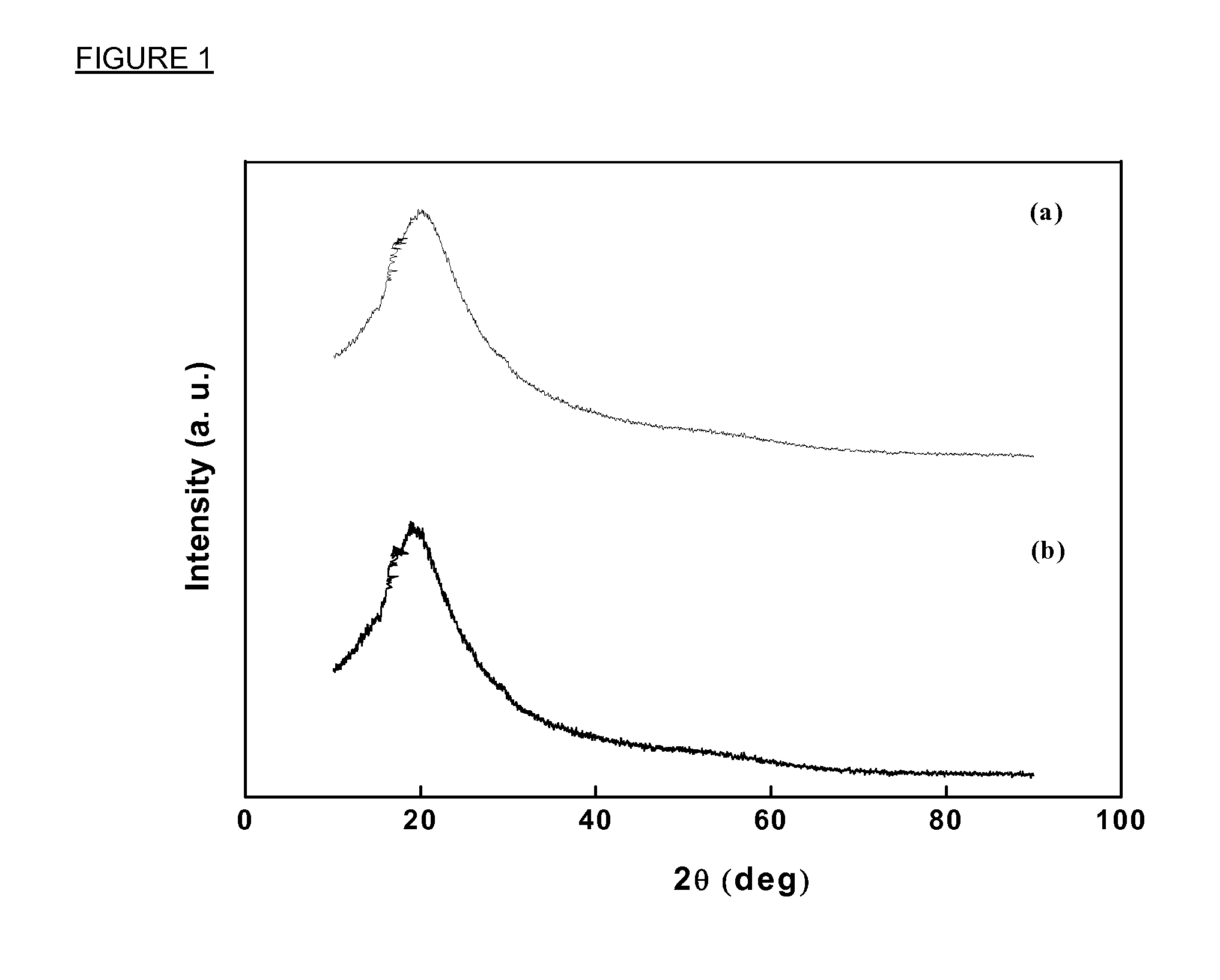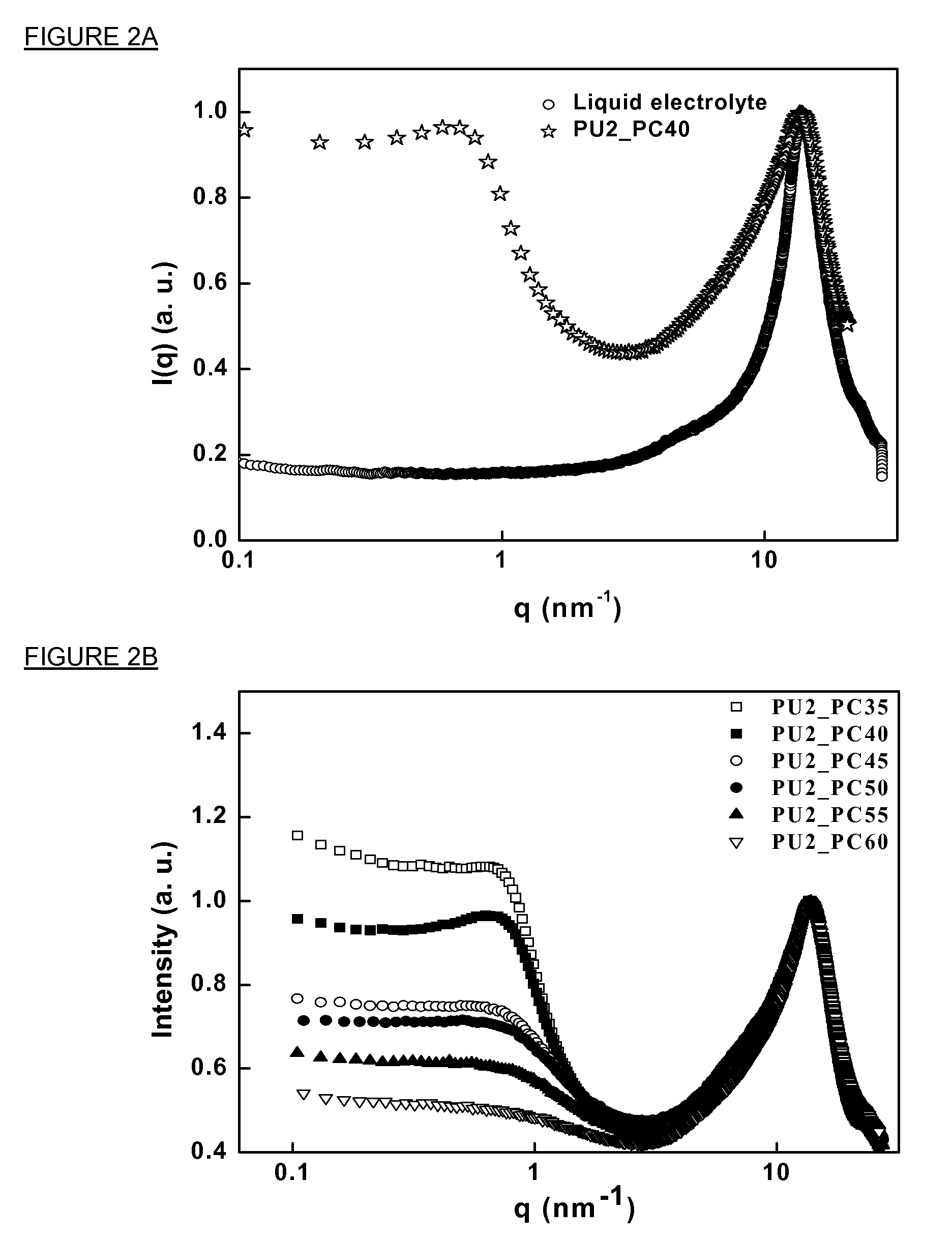Polyurethane gel electrolytes with improved conductance and/or solvent retention
- Summary
- Abstract
- Description
- Claims
- Application Information
AI Technical Summary
Benefits of technology
Problems solved by technology
Method used
Image
Examples
example 1
PU-PC Based Gel Electrolyte
Propylene carbonate (PC) and lithium perchlorate (LiClO4) were mixed in a molar ratio of 12:1. The liquid electrolyte was stirred at room temperature, and PEO triol (7.4 g) was introduced followed by MDI (1 g). The solution was mixed thoroughly and transferred to a polypropylene plate and kept at room temperature for 24 hours to complete the polymerization leading to the gel formation. The gel electrolytes thus obtained were kept in an oven at 50° C. for 12 hours to remove the excess solvent. The excess solvent lost in this step was estimated to be 1-3 wt %. Conductivity was measured at room temperature, and shown in Table 1. The weight percentages shown in Table 1 are prior to drying.
The polyurethane matrix with isocyanate to hydroxyl groups (NCO:OH) in 1:1 molar ratio for all the PC content shows non-homogeneity and micro phase separation. For the matrix with NCO:OH 1:1.2 molar ratio, uptake of PC content was limited to 45 wt %. Above this solvent conten...
example 2
PU-γBL Based Gel Electrolyte
PU and γ-butyrolactone (γBL) based gel electrolyte was prepared essentially as described above. γBL and LiClO4 were mixed in a molar ratio of 12:1. Conductivity was measured at room temperature, and shown in Table 2.
example 3
PU-Mixed Solvent Based Gel Electrolyte
PU with based gel electrolyte was prepared essentially as described above using PC-γBL, PC-ethylene carbonate (EC), and EC-γBL. The molar ratio of mixed solvents was fixed at 1:1; the molar ratio of the solvents to LiClO4 was fixed in a molar ratio of 12:1. Conductivity was measured at room temperature, and shown in Table 2. The weight percentages shown in Table 2 are prior to drying.
TABLE 2polymersolventcon-con-NCO:OHtent(mo-tentLiClO4molar(wtlar(wtcontentσDC at RTCoderatio%)ratio)%)(wt %)(S / cm)PU2_γBL1:1.133.84γBL606.161.80 × 10−3PU2_PC_γBL34.30PC-605.702.98 × 10−3γBL(1:1)PU2_PC_EC34.30PC-605.705.93 × 10−3EC(1:1)PU2_EC_γBL33.76EC-606.243.91 × 10−3γBL(1:1)
Results
The structure and morphology of the PU electrolytes have been studied by Wide Angle X-ray Diffraction (WAXD), Small Angle X-ray Scattering (SAXS), and SEM. The thermal properties of the PU electrolytes have been studied by Differential Scanning Calorimetry (DSC) and Dynamic Mechanical A...
PUM
| Property | Measurement | Unit |
|---|---|---|
| Molar mass | aaaaa | aaaaa |
| Temperature | aaaaa | aaaaa |
| Temperature | aaaaa | aaaaa |
Abstract
Description
Claims
Application Information
 Login to View More
Login to View More - R&D
- Intellectual Property
- Life Sciences
- Materials
- Tech Scout
- Unparalleled Data Quality
- Higher Quality Content
- 60% Fewer Hallucinations
Browse by: Latest US Patents, China's latest patents, Technical Efficacy Thesaurus, Application Domain, Technology Topic, Popular Technical Reports.
© 2025 PatSnap. All rights reserved.Legal|Privacy policy|Modern Slavery Act Transparency Statement|Sitemap|About US| Contact US: help@patsnap.com



